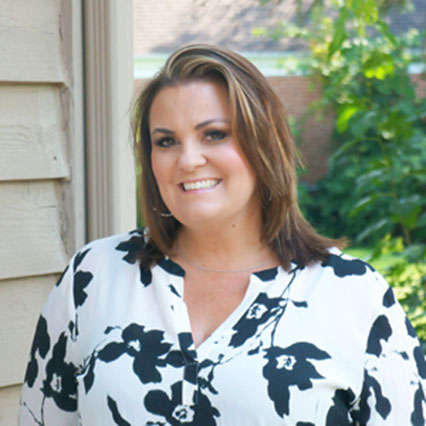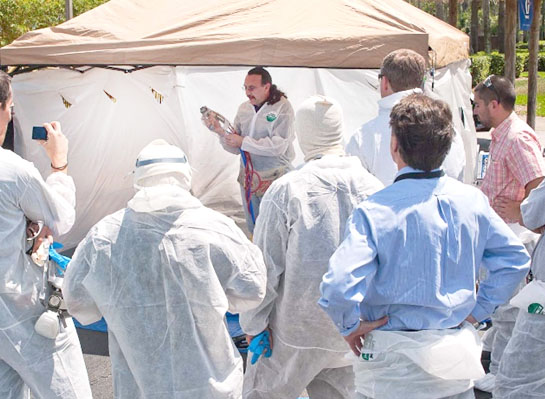Spray Foam Insider conducted interviews, via a questionaire, to obtain important insight into what the PDA has to offer the spray foam, polyurea and coating industries. We received answers to our questions from two perspectives: One for practical applications and one from a technical point of view. Special thanks to these two PDA members for taking the time to share their expertise.

Rebekah Taylor, SPI’s Midwest Sales Manager.
She will become the next president of the PDA in 2018.
Q. Why should spray foam companies consider joining the PDA?
A. In order to grow, I believe companies should always be looking for ways to expand their business. Joining PDA gives spray foam companies accessibility to a network of polyurea applicators, contractors, suppliers and educators, who are willing to share their knowledge and experience. This exposure can be instrumental in helping spray foam companies expand into polyurea applications, and accept new projects.
Additionally, joining PDA gives access to the annual convention with presentations and exhibits, a number of training courses throughout the year, benefits specific to members, and most importantly, a forum to ask questions or get guidance about an application.
Q. What are some ways that polyurea and polyurethane applications can be complementary?
A. The systems are closely related, and can be used together in many markets such Construction, Marine, Waste Water, Oil & Gas and more. Idyllically, spray foam companies already own plural-component equipment that can also be utilized to spray most polyureas, thus reducing initial start-up costs, which can be a deterrent to anyone completely new to either industry.
Q. What are some applications for using polyurea over spray foam?
A. There are a great number of possibilities. The most obvious and widely recognized is roofing spray foam with a polyurea topcoat over it. The system will offer energy efficiency to a building, waterproofing protection, and the polyurea will protect the spray foam against UV degradation.
Another great application of the dual system is in fish holds on fishing vessels. In order to keep the fish fresh, the holds are sprayed with foam. Then a topcoat of polyurea is sprayed over the foam to protect the foam from corrosion caused by the salt water, and routine sanitizing procedures used in the holds.
Q. How important is it that polyurethane and polyurea applicators understand the application process each is engaged in? Examples?
A. It is critical the spray foam operators understand the application processes and in particular the polyurea chemistry. Albeit costly to remove spray foam if there is an issue with the end application, it is hugely expensive to correct a polyurea spray issue. Once applied, polyurea is very difficult to remove from a substrate.
With both applications, the applicator must be very aware of their surroundings and take great precautions to protect the areas outside of the immediate spray area. Removal of product is timely and expensive.
Q. How could the above information help enhance or expand spray foam applications?
A. When a spray foam applicator understands the polyurea chemistry, and the benefits of adding polyurea to their business, they can expand in to many different markets. Typically, the risk or liability of a polyurea project is greater than that of a spray foam project, which in turn demands a higher cost of application to the end client and more revenue to an applicator.
Q. How important is it that Polyurethane and Polyurea applicators should join forces?
A. When one industry supports the other, it will help to incorporate creativity, and ultimately produce more jobs where these technologies can be combined.

Benji Abbot, Immediate past president of ABAA and Education Field Director
at SPI, instructs trainees in Polyurea basics at the PDA.
Q. Why should spray foam companies consider joining the PDA?
A. Most foam equipment in use today is capable of spraying most polyurea systems that is in use today. This can open up another revenue stream.
Q. What are some ways that polyurea and polyurethane applications can be complementary?
A. Polyurea can be used as a suitable topcoat for foam roofing systems as one example. Top coating foam on tank exteriors is another example as well. It provides a tough durable skin to help protect the foam from the elements.
Q. What are some applications for using polyurea over spray foam?
A. As stated above, a top coat for foam systems. It resists hail damage, insect and bird damage as well. It provides a tough moisture resistant outer layer that will outlive other commonly used top coats.
Q. How important is it that polyurethane and polyurea applicators understand the application process each is engaged in? Examples?
A. This is a very important and critical part. Polyurea is typically applied with a higher pressure and temperature than that of polyurethane foam, so mixing chamber sizes typically have lower outputs in order to have higher dynamic pressures during polyurea applications. Some polyurea systems may need higher pressure equipment in order to achieve the full physical properties of the polyurea system, but that is not always the case, so many foam equipment systems can already spray polyurea with just the use of a smaller mixing chamber in the currently used spray gun.
When we think polyurea applications, we think lower outputs rather than higher outputs.
With polyurea applications, depending on the substrate that the polyurea is being applied to, the surface prep is typically more detailed than that is for polyurethane foam applications, so we have to look at the surface preparation as the foundation of our work and how that it has a direct effect of the life cycle of the coating being used.
We have to understand that not all polyurea’s are the same, so one polyurea system will not do everything. We have to select the correct polyurea for the intended service. If not, then we can expect to have failures.
Q. How could the above information help enhance or expand spray foam applications?
A. Opens up the portfolio of the company and enables them to do work that they did not do before.
Q. How important is it that Polyurethane and Polyurea applicators should join forces?
A. This one is a tough one as not all foam applicators will accept polyurea as a viable coating to add on to their business.
I look at it as another tool in the tool box of coatings that can enable a company to be able to expand into new market areas.
For more information about the PDA visit their website pda-online.org.





